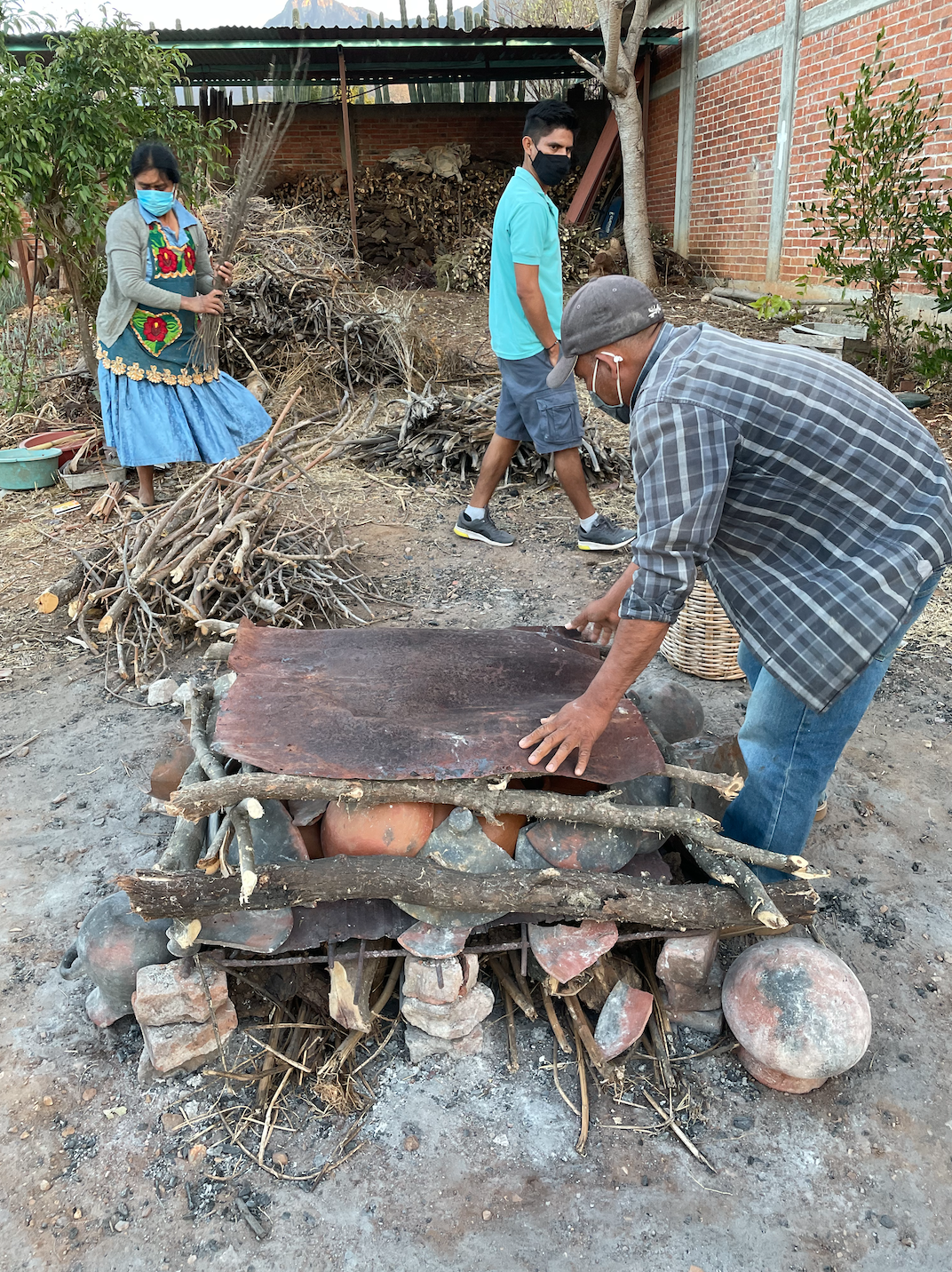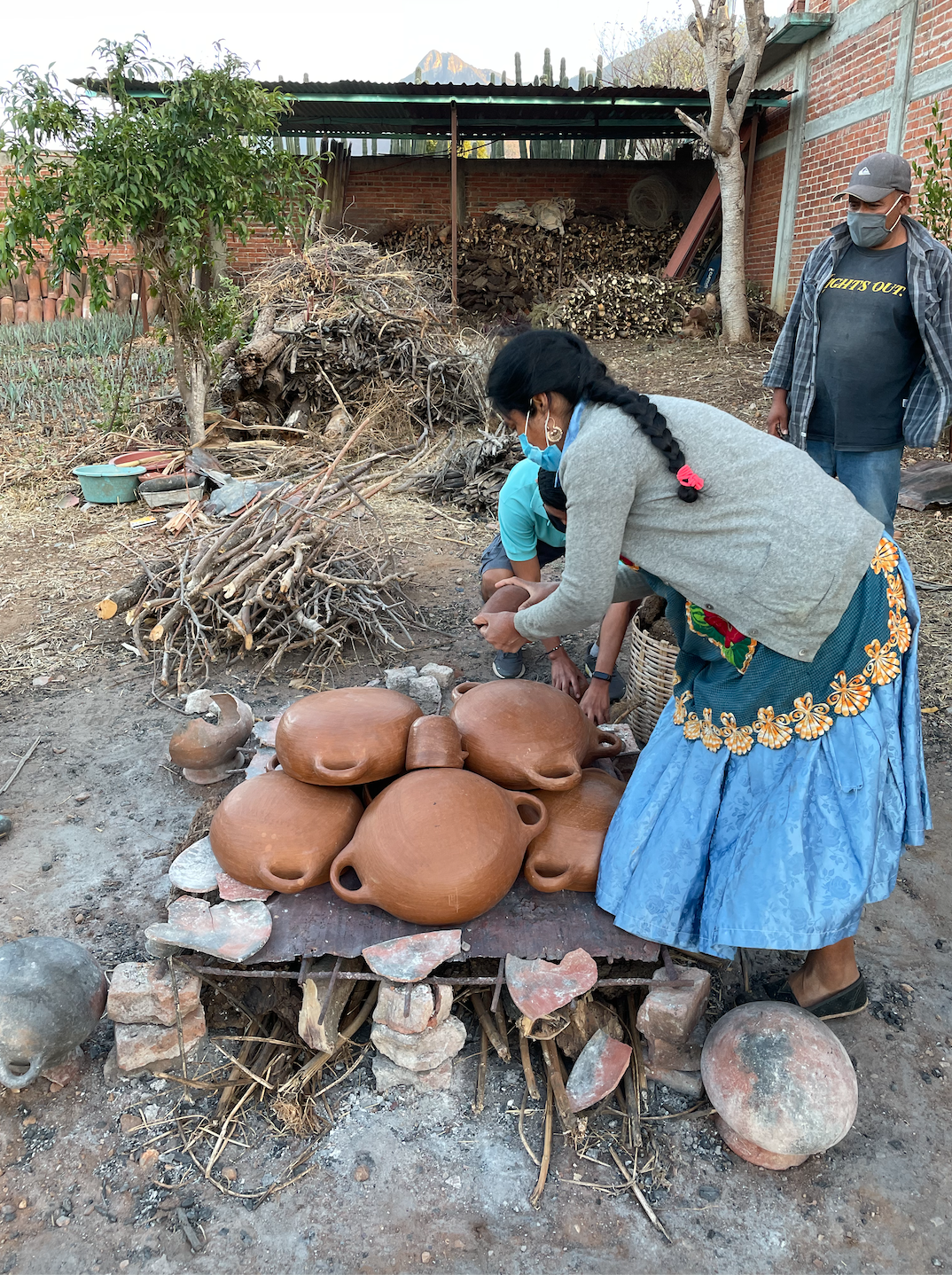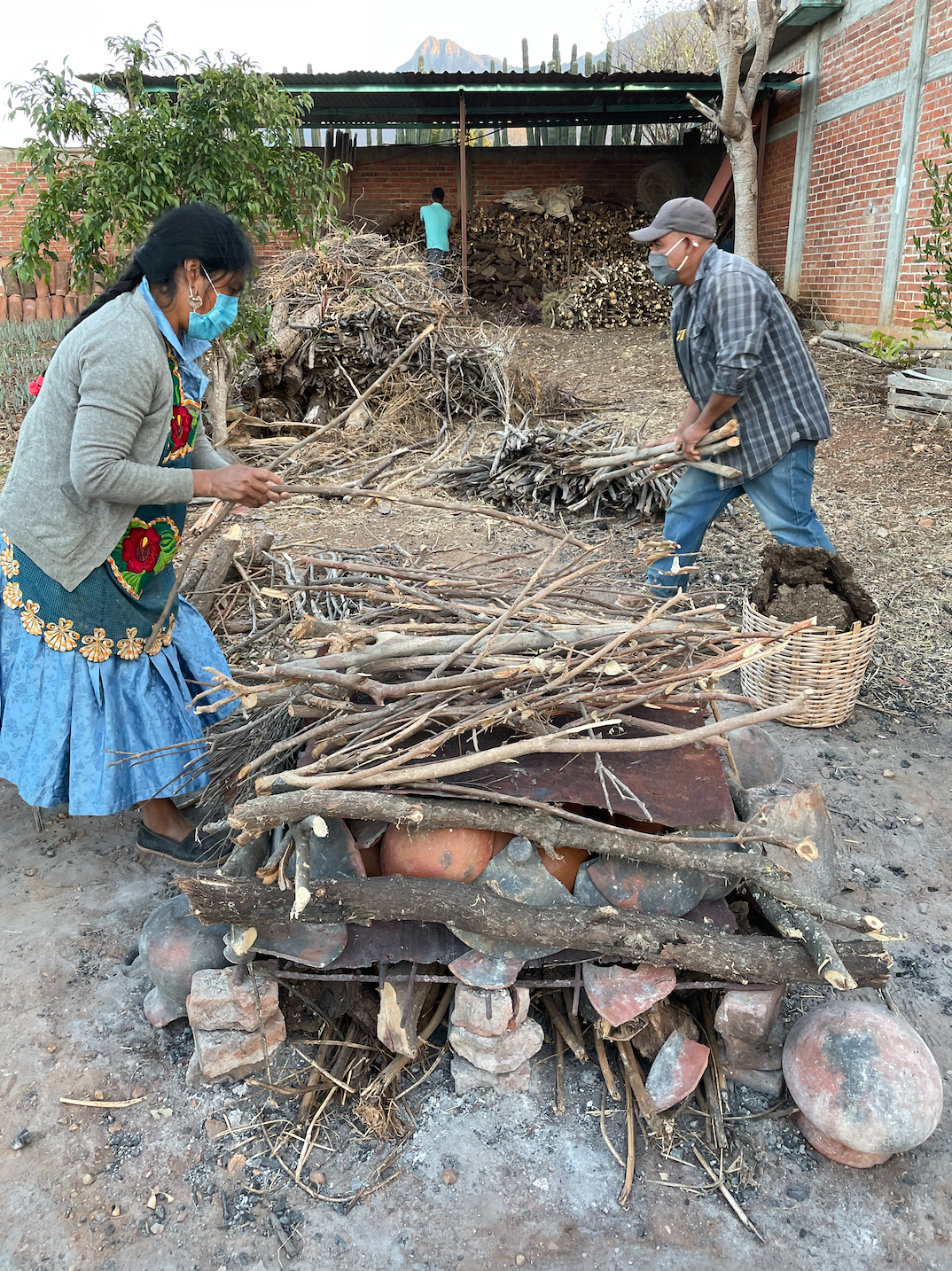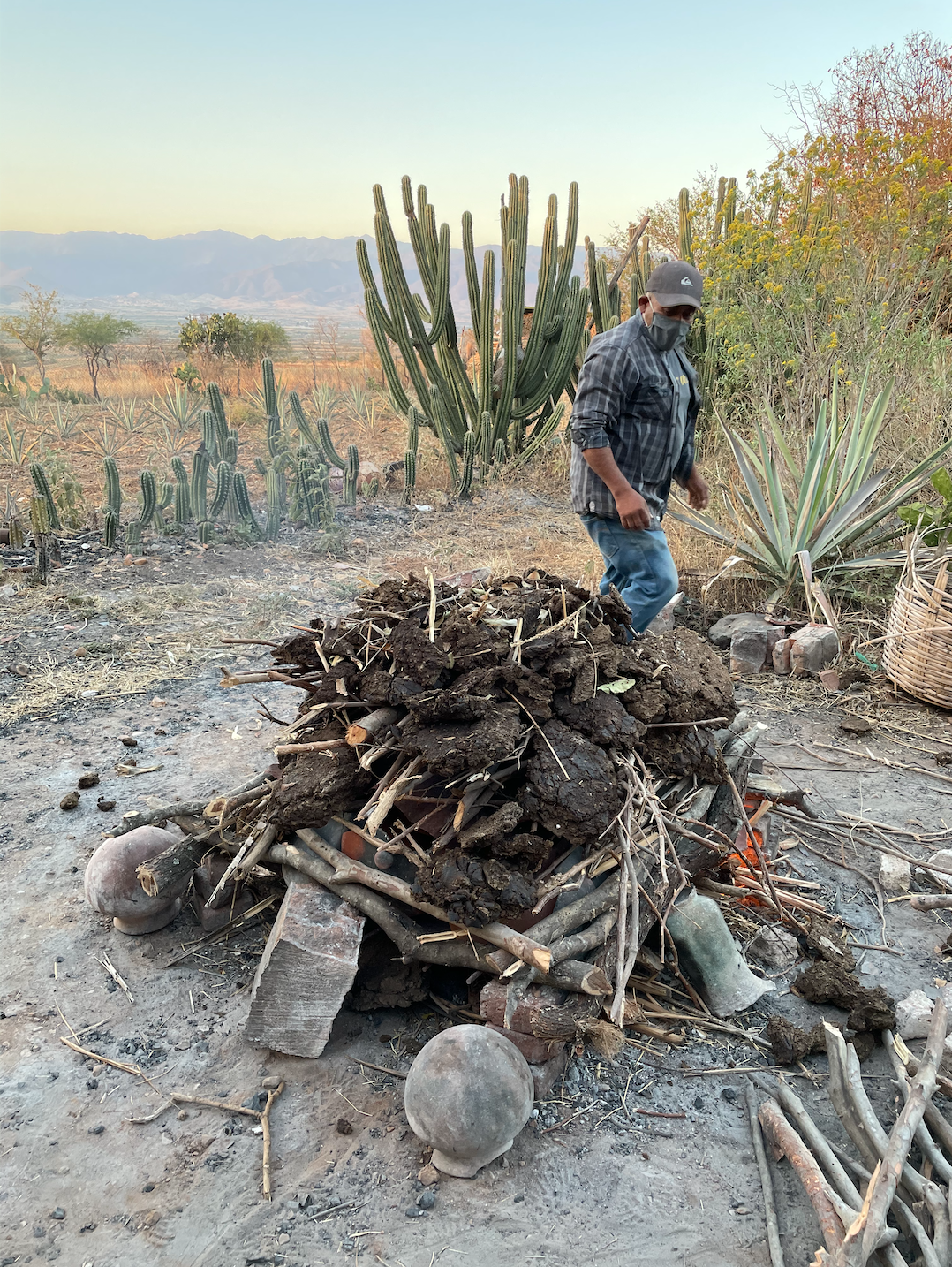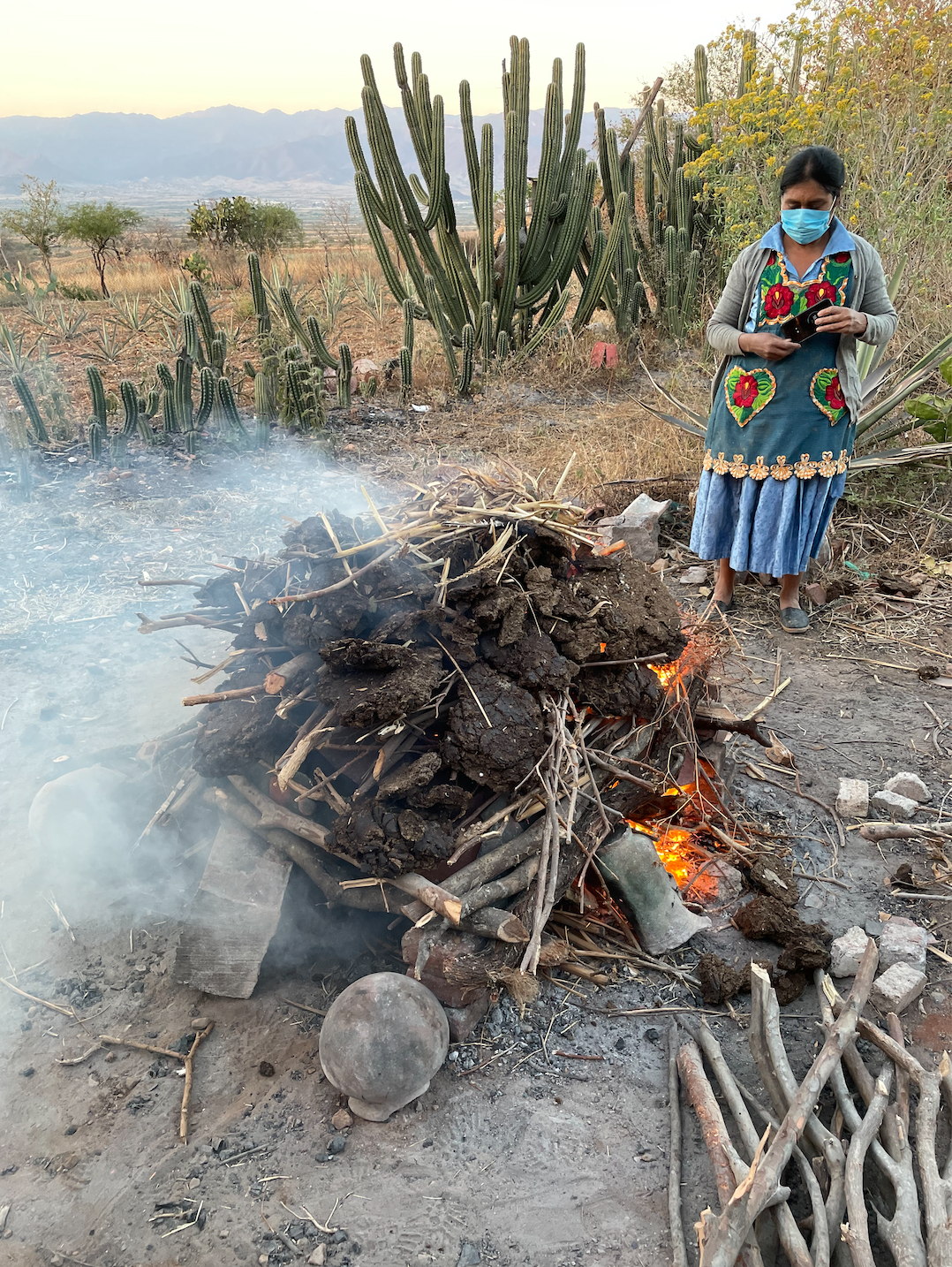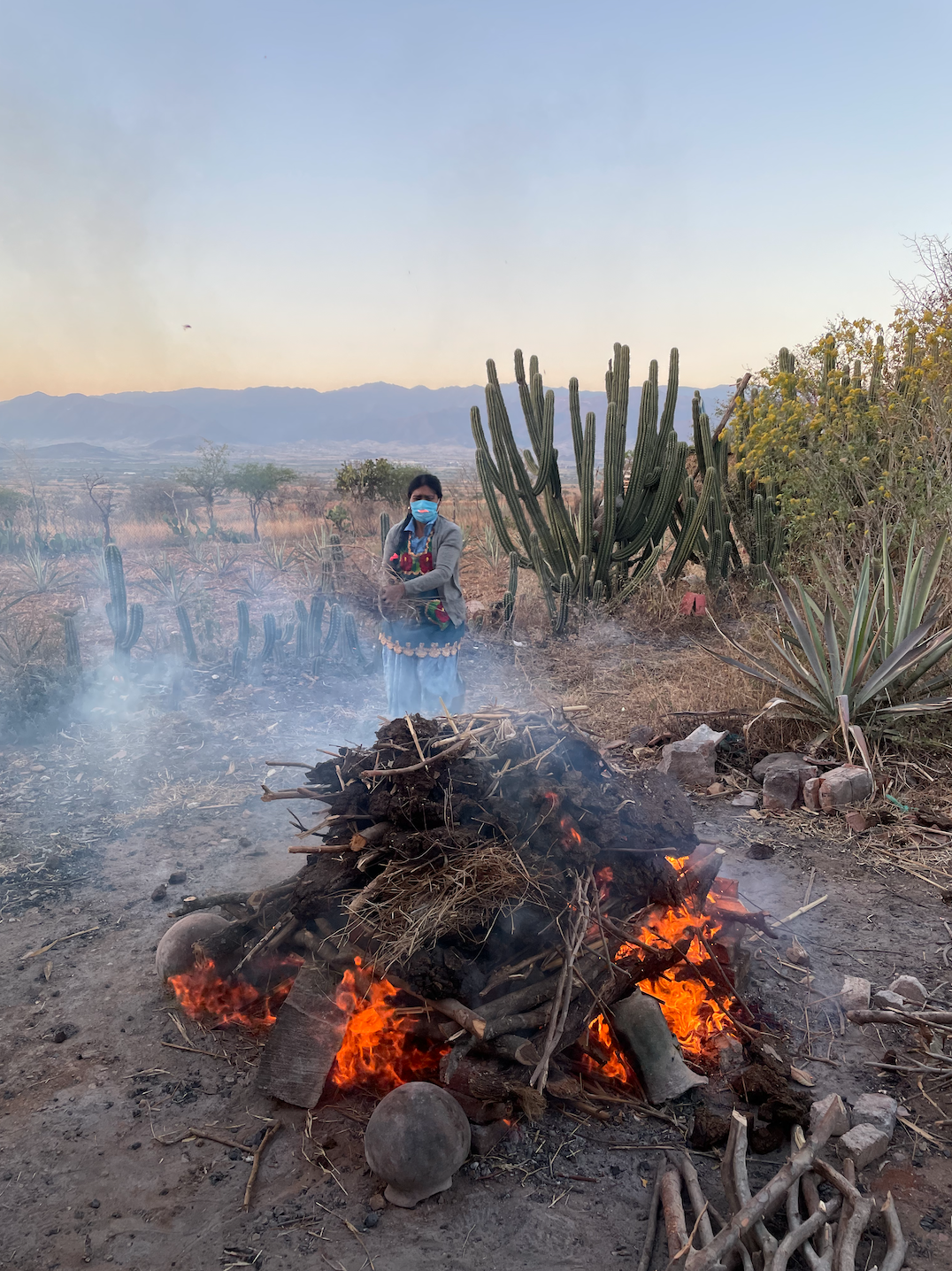Meet & Make With the Red Clay Ceramic-producing Maestras of San Marcos Tlapazola
Witnessing the timeless touch of a San Marcos Tlapazola Maestra’s hands at work on red clay is one of the best introductions to Oaxaca’s rich artisanal traditions.
For nearly twenty generations, the potters of San Marcos Tlapazola have been hand-crafting comals (flat griddles used to make tortillas) and other cookware from their local supply of iron oxide-rich clay. Their Barro Rojo (Red Clay) ceramics are sought after the world over and a draw for travelers seeking to experience yet another slice of the rich artisanal landscape of Oaxaca’s Central Valley.
Every February, just after the corn harvest, the 300 or so potters of San Marcos Tlapazola (all women) make their way up into the hillsides to expertly-select all of the beige- and red-tinged earth they’ll need for the year ahead. It’s a trek that is both grueling, but necessary. Under the hot Oaxacan sun and the exposed hillside, they hack at the earth with pick axes and shovels, scooping up and adding heavy clods of earth to the sacks they’ll eventually tie to their backs and lug back down the mountain.
Once back at their workshops, they soak this collected earth in water, sift it, then knead it, and ultimately lay it out to dry under the sun for many hours, waiting patiently for it to become just the right texture. Once ready, they mix the prepared clay with water to soften it into a buttery smooth consistency and add sand to avoid any cracking during the firing process.
Grabbing a scoop of this now ready clay, the Maestra gets to work. The clay is shaped and transformed with an expert touch, one well-honed since childhood when she likely learned from the chair beside her mother and her mother’s mother. Not a potter’s wheel in sight, she picks up tools of smooth leather, the shell of a gourd, and a dried out cob of corn to shape and smooth the clay into forms both familiar and fueled by inspiration in the moment. Within minutes a two-handled pot appears or a curved vase with a mouth and nose. It’s as if these flawless forms appear straight out of thin air.
Once the piece has been shaped to the Maestra’s liking, it’s then dipped in a glaze made of red clay and water and set aside to harden and dry for burnishing. Burnishing is yet another astounding piece of this remarkable San Marcos Tlapazola tradition. The smooth river stones used to polish the dried clay pieces are typically passed down from mother to daughter through the generations. If you’re lucky enough to hold one in your hands, it’s possible that you are holding a stone from that Maestra’s original pottery-producing ancestor.
This process is repeated over and over again until a sufficient collection of pots, plates, and platters have been created for a firing.
The firing process is delicate. If a rogue rain shower happens to dampen the wood or the wind that day is roaring a bit too strongly, the entire collection could be ruined. For this reason, many of the Maestra’s do their firing in the morning hours. They prepare an area of their yard, following a very distinct layering process of first stacked brick or stones, then a metal sheet or bedsprings to create an elevated bed for the pottery to rest on. From there, they add the pottery and surround it with twigs, logs, and pieces of broken pottery before covering it all again with yet more rusted sheet metal. Additional twigs and logs are then layered on top along with cow dung and dry organic matter. Then it’s all set aflame with a match. The pottery fires for about 45 minutes. Once done and the fire has died out, the pieces, hopefully unbroken, are cooled, dusted off, and packaged up for the Maestra’s next trip to market.
This tradition, and this way of life in San Marcos Tlapazola, is one that many of these women are born into and expected to carry on, but it’s one that many, including the Maestra I met, truly find peace and life-giving satisfaction in practicing. That is a sight to see.
How To Experience This Ancestral Red Clay Ceramics Tradition in the Flesh
The Tour Option
Join Corinne and Diego, Oaxaca locals, potters, and the founders of the non-profit Terra Ancestral, for an immersive experience in the red clay-making community of San Marcos Tlapazola. The day begins with a hike to the communal clay pit on the hillside to hunt for wild clay. Then sit down and prepare your own red clay ceramic creation under the expert eye of Maestra Valentina in her workshop. Try your hand at Valentina’s techniques for burnishing and applying red iron oxide to the pottery. At mid-day, enjoy a delicious local lunch cooked on the comal with Valentina’s beautiful garden as your backdrop and her family as your dining companions. The day wraps with an open-air firing under a sunset sky and the opportunity to purchase some of Valentina and her daughter’s pieces, or eagerly wait a few weeks for your own hand-made fired and finished pieces to be delivered.
TOUR DETAILS
Recommended Local Tour Operator: Terra Ancestral, an independent not-for-profit organization on a mission to support Oaxaca’s artisans and Maestras
Price: $96 USD - What you pay goes mainly to the Maestras and on to Terra’s local partners who are always from rural communities in Oaxaca, as well in covering direct costs such as fuel & road tolls. If there is any remainder, it is invested in other clay communities to work with new Maestras.
Duration: Full Day, pick up at 9am and return by 6pm
How Often? Reach out to Corinne & Diego to find out their next departure
What's Included?:
- All materials
- Private transportation
- All meals and snacks
- Red clay ceramic(s) crafted by you
For more information and to book, click here. This tour isn’t regularly operating, but the alternative option below is. If this one’s not available, WSE Travel’s experience below is a great alternative in the same town with a different maestra.
Alternative Tour Option
Join WSE Travel’s Red Clay Pottery Experience to explore the rich traditions of Macrina Mateo Martínez's renowned red pottery, also in San Marcos Tlapazola. The experience includes a hands-on workshop from Martinez herself, as well as insights into the village's vibrant culture. Martinez will share her story of leaving her village and founding a local women’s empowerment co-op. Like all of WSE Travel’s experiences, this isn’t just a tour; it’s a celebration of art, resilience, and community.
TOUR DETAILS
Recommended Local Tour Operator: WSE Travel, a local tour operator focused on connecting travelers with locals through deep cultural exchanges, not cookie-cutter experiences.
Price: $145 USD
Duration: About 6 hours, depart at 9am and return by 3pm
How Often? Wednesday through Sunday weekly
What's Included?:
- Pre-trip information to educate and prepare you for the experience
- English-speaking guide
- Translations + demonstrations with local food vendors
- Transportation to/from your Oaxaca hotel
- All meals and snacks (except alcoholic beverages)
- A small gift to take home with you
For more information and to book, click here.
The Do-It-Yourself Option
San Marcos Tlapazola is about an hour and ten minute drive from Oaxaca City. If getting there by colectivo, you’ll first have to go to Tlacolula and then from there catch a second colectivo or taxi to San Marcos Tlapazola. The colectivos from Oaxaca City to Tlacolula leave from the Second Class Bus Station near the Mercado de Abastos.
Once in San Marcos Tlapazola, you can wander the main street of Matamoros and poke your head inside any open home workshop studios or collectives that are accepting visitors. Though I haven’t been myself, the female-run shop Mujeres del Barro Rojo is said to be a good starting point for your San Marcos Tlapazola adventure.
Alternatively, you could plan to shorten the trip by timing your visit to Tlacolula for its Sunday Market when many of the potters from San Marcos Tlapazola make their way to this market to sell some of their Barro Rojo ceramics. They’re easy to spot, if not for the red clay ceramics laid out in front of them than for the colorful pinafore-style aprons embellished with floral embroidery that they wear.
The benefit of going all the way to San Marcos Tlapazola, however, is that the selection is much bigger and better, as some of their heavier and more elaborate pieces often don’t get carried to market. That and the fact that you just might be lucky enough to witness the clay-making or firing process in action.
If you found this post helpful, one of the best ways to say thanks is by booking your hotels, transport, tours, and trip insurance through the links on my Travel Resources page or by clicking any of the trip-relevant links below. This sends a bit back my way at no additional cost to you and helps to keep this blog up and running. Thank you for your support!
Accommodations: Booking.com, HostelWorld, Trivago
Tours & Experiences: Viator, GetYourGuide, EatWith, TripAdvisor
Trains, Buses, & Transfers: Bookaway, 12Go, BusBud
Car Rentals: DiscoverCars.com
Trip Insurance: Squaremouth, WorldTrips
Learn Spanish: Rosetta Stone, Babbel, Pimsleur

